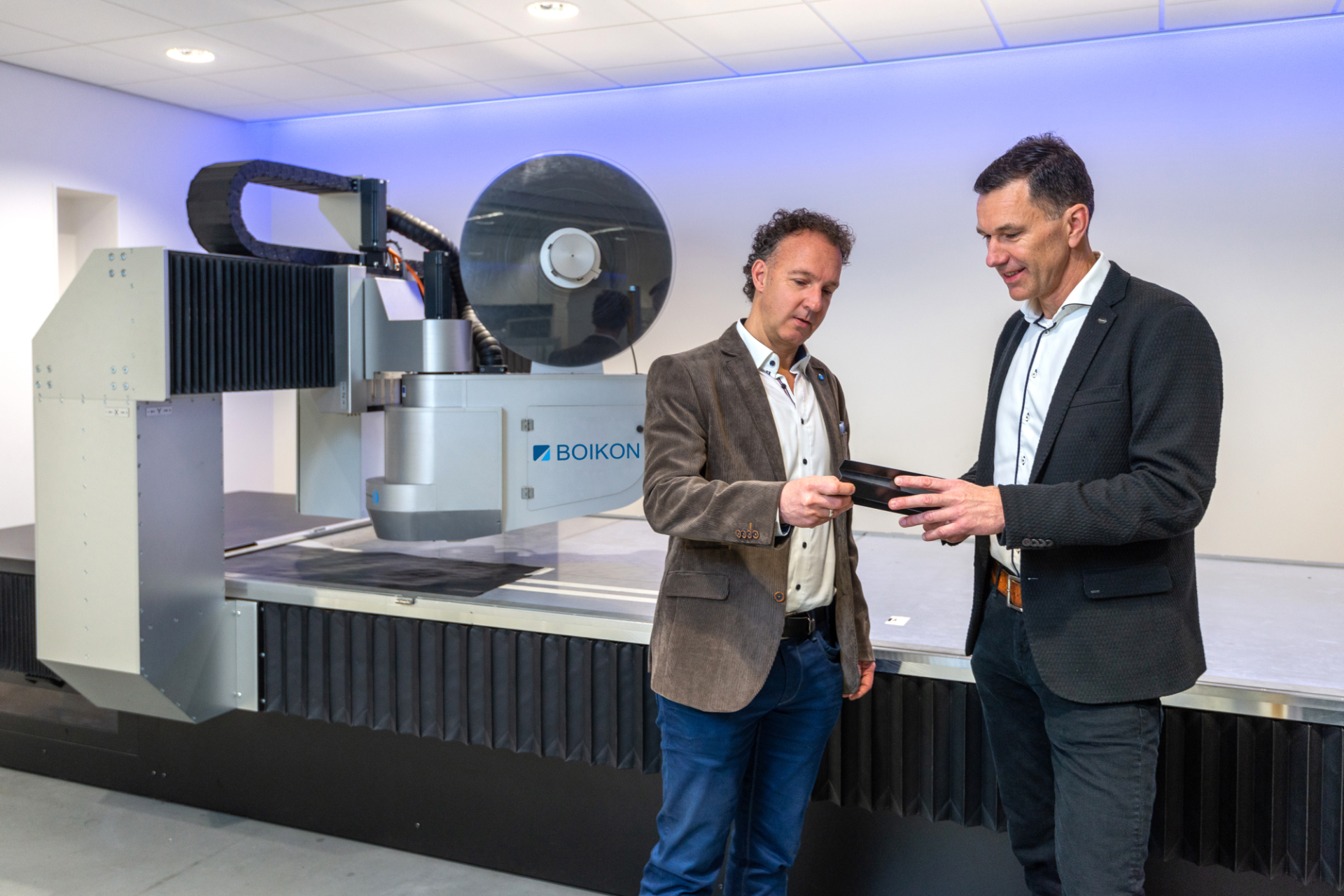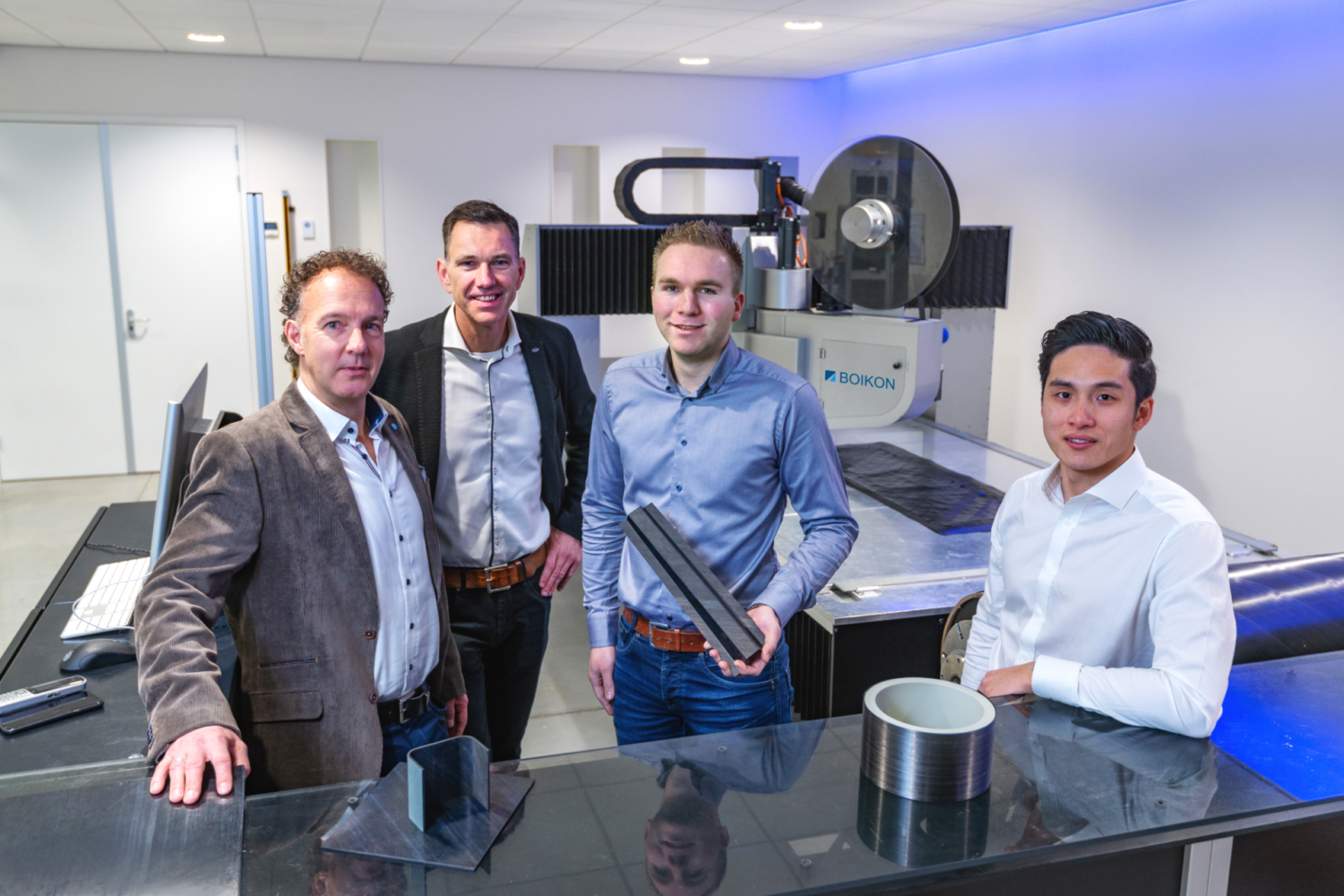Ironclad and superlight material. Thermoplastic composite offers great advantages. It is only difficult to process into finished products. The high cost and robust energy consumption also make the material less attractive. A drastic improvement is being worked on in the Northern Netherlands under the name Luxovius.
A sheet of thin, black strips of carbon fiber laid side by side and crosswise. This is what the semi-finished product looks like that machine builder Boikon from Leek manages to machine, after years of development and research. It doesn't look spectacular at first glance, but make no mistake: the world's major aircraft manufacturers want to know all about it. This processing of carbon-fiber-reinforced thermoplastic material holds the promise of cost savings, environmental relief and quality enhancement.
Boikon has managed what others cannot. 'Until now, this technique has only been done manually. We can do it faster, more accurately and more variably. So you get a semi-finished product with which products in different shapes and sizes can be made better and more profitably,' says Jeroen Oosterhof, director owner of Boikon.
Outdoor autoclave
The advantages of thermoplastic composites (soften when heated) over thermoset composites, so-called thermosets (remain hard when heated), have long been known. The reason the inferior thermosets are used much more is related to cost. Forming thermoplastic composite requires a large amount of energy in the form of heat. To do so, the material must spend hours in an autoclave, a meter-sized pressure chamber in which the material is formed under great pressure and heat.
Fokker already developed a way to form the material outside the autoclave 15 years ago, using a press and much less energy. Only: that worked at the laboratory level, but not on a larger scale. So Boikon was called in. Oosterhof: 'Years we put into it together, because of the great promise. It was a big puzzle and I wondered whether we would succeed in making it profitable. The project gained momentum when that well-known major American aircraft manufacturer visited about six years ago and showed great interest.'
The machine Boikon developed lays strips of tape side by side and crosswise over each other and welds them together. When the sheets are then heated and put into the press, the extremely strong and lightweight material in which the industry is so interested is created. An additional advantage: thermoplastic composite is very recyclable, unlike the thermoset variety.

Complete hull
That the aerospace industry is following this Luxovius project closely is obvious. Not surprisingly, the Netherlands Aerospace Center (NLR) is involved. Moreover, the superior material can be expected to receive a warm welcome in other industries as well. Think of the automotive industry, shipping, all industries where weight is a determining cost factor and strength a requirement.
"That is something we are working on now," says André Harmens. NOM's Business Developer is helping to interest other companies in these new production techniques. 'We see this development as a wonderful opportunity to stimulate business activity through innovation and thus employment in the North. That is why NOM is participating in Luxovius.'
There is increasing success in pressing the material into different shapes. This creates aircraft parts for all kinds of applications. Essentially, the entire fuselage can be made this way, although autoclave is still needed for those kinds of large products because of the somewhat better adhesion. Business Development Manager Kalong He (Boikon): 'Aircraft fuselages are still made from aluminum now, using huge amounts of rivets. Imagine not having to do that anymore ...'
Digital Twin
The process developed by Boikon and Fokker to make carbon-fiber-reinforced thermoplastic composites is completely new. That means there are no rules and guidelines on tensile strength, strength, weight, elasticity and whatnot. Every new shape that can be used in an aircraft must therefore be separately inspected. This is the reason why a Digital Twin is being developed within Luxovius. This involves a simulation of the process based on measured parameters. Every step in the process, every millimeter of the material, every angle, every thickness, every action is recorded, so that later it will be possible to calculate exactly what properties the material has with which operation.
Rein Koppert, Composites Project Manager, is working intensively on the Digital Twin. 'That gives us the opportunity to have more control over the production process. We get the opportunity to test with the twin what will happen in reality. The proof we create with it is essential.
Boikon and Luxovius
That Fokker turned to Boikon years ago to automate its production process is not surprising. The Leek-based company has been supplying innovative machines and systems for almost a quarter of a century, mainly to the food, pharmaceutical, tobacco and aerospace industries. About seventy people now work in the modern factory in Leek, where robots drive around, complete factory lines are tested and innovation is a matter of course.
When Boikon seemed able to automate the production of the semi-finished thermoplastic composite, new possibilities opened up. That Fokker wants to speed up development is obvious. But many more industries can benefit from the new material. Luxovius was set up to investigate how these new markets could be reached and to further optimize the production process. Besides Boikon and Fokker, the Netherlands Aerospace Center, NHL Stenden and the NOM also participate in Luxovius.
